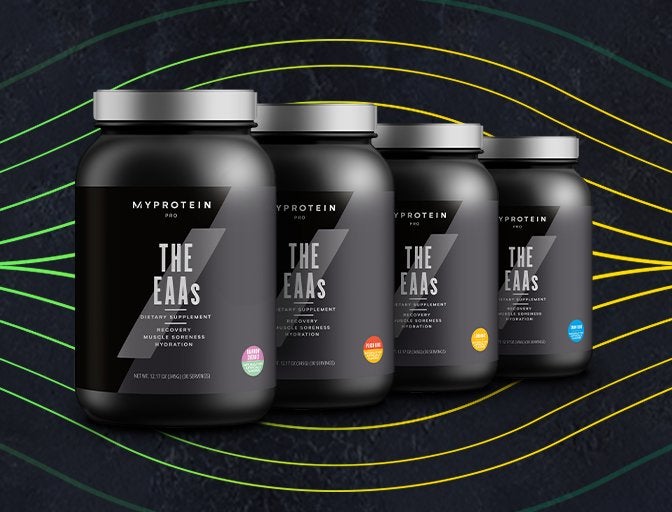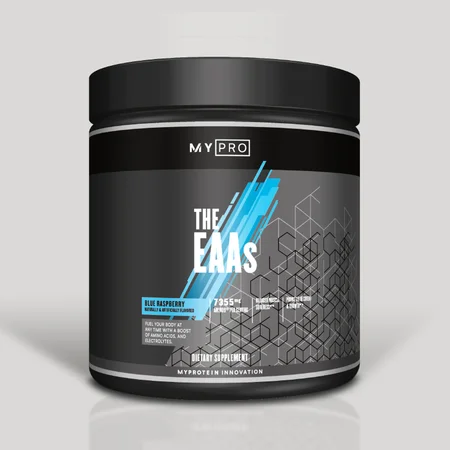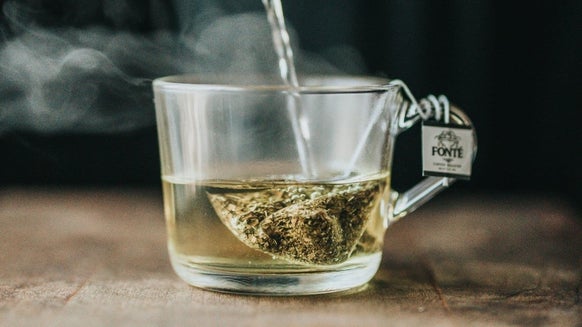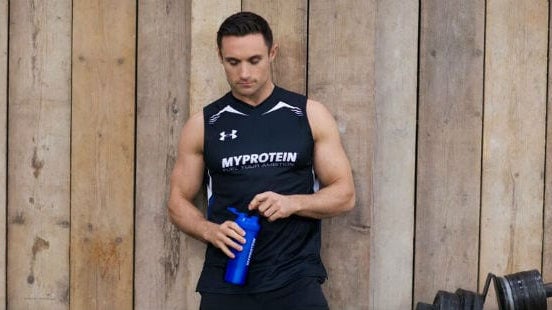Everything You Should Know About EAAs – Are They Superior to BCAAs?

Over the last few years, opinions over BCAAs have swayed. Controversial opinions have been voiced over whether or not BCAAs are even effective and if they should be replaced by EAAs (Essential Amino Acids). So let's get to the bottom of it.
Let's weigh the pro's and cons of EAAs to see if they are superior to BCAAs.
What are Amino Acids?
Amino acids are the building blocks of protein and muscle tissue. Our bodies are constantly breaking down and building up muscle tissue. Exercise typically causes the muscles to break down, making it essential to get proper nutrition to help them rebuild and grow. Certain amino acids, like essential amino acids (EAAs) and branched chain amino acids (BCAAs) are the most important when it comes to supporting healthy muscle tissue.
What are Essential Amino Acids?
There are twenty amino acids that make up the proteins in our body. There are 11 that the body can make, and nine that it cannot.

What do EAAs Do?
There are nine essential amino acids, all of which contribute to muscle building, tissue repair, and exercise endurance. However, they all serve their own functions in the body as well.
| Essential Amino Acid | Primary functions in humans |
| Histidine | Nerve protection, immune function1 |
| Isoleucine (also a BCAA) | Muscle metabolism, immune function, energy from fats and carbohydrates2 |
| Leucine (also a BCAA) | Muscle repair, blood sugar control, energy from fats, protein synthesis3 |
| Lysine | Protein and collagen production, calcium absorption, immune function4 |
| Methionine | Growth and metabolism of energy from food5 |
| Phenylalanine | Enzyme and neurotransmitter function6 |
| Threonine | Structural tissue, immune function, fat metabolism7 |
| Tryptophan | Used to make serotonin and melatonin, which regulate appetite, mood, and sleep8 |
| Valine (also a BCAA) | Stimulates muscle growth and energy from carbohydrates9 |
What is the difference between EAAs and BCAAs?
From the above chart, you might notice that the three BCAAs (isoleucine, leucine, and valine) are also part of the group of essential amino acids. They get their name from their chemical structures, which all contain a “branched chain” of carbon atoms on one side of the molecule. If BCAAs have been popular for so long, why do people now see the need to include all the EAAs?
Muscle protein synthesis requires more than just BCAAs — it requires all essential (and non-essential) amino acids in adequate amounts.10 While the idea to supplement with the essential BCAAs has been a popular technique, more recent research has actually shown that BCAAs alone are not enough to induce sustainable synthesis of new muscle tissue.10 Anyone who benefits from BCAAs likely already gets adequate protein in their diet – which would include the other amino acids necessary for building muscle.
Why are EAAs better than BCAAs?
Essential amino acids contain the branched chain amino acids PLUS six more that participate in metabolism and other crucial functions. For someone who is looking to see greater results in muscle building, EAAs can be superior to BCAAs alone. Because all twenty amino acids are necessary for creating new muscle tissue, taking a supplement that contains nine amino acids (EAAs) versus just three (BCAAs) is more likely to provide the necessary building blocks. EAAs can be especially useful for those who don’t meet their daily protein needs, because they likely need a wider range of amino acids for building new muscle tissue.

Everything You Should Know About EAAs
Benefits of EAAs
- EAAs can help with exercise results and performance
Just like BCAAs, when EAAs are used as a supplement they provide the key components to increase muscle protein synthesis to counteract the muscle breakdown that’s caused by intense exercise.10 Giving your muscles what they need to reach an anabolic (muscle building) state also helps to speed recovery and improve your performance during your next workout.
- They can lead to better sleep and improved mood
Tryptophan, one of the EAAs that is not a BCAA, is the precursor for two important neurotransmitters — serotonin and melatonin.8 While old wives’ tales mention feeling tired after eating turkey, or drinking a glass of milk before bed to become sleepy, there is some truth to these ideas. The high protein content of those foods means they have enough tryptophan to impact the levels of the neurotransmitters. Serotonin helps to regulate appetite and mood and is often the target of antidepressant drugs. Melatonin is another popular supplement that is used to help people who have trouble falling asleep. Adequate amounts of EAAs can help to regulate their levels in the body.8
- Essential Amino Acids can improve body composition
When adequate EAAs are available for muscle protein synthesis, your body is more likely to burn fat instead of muscle. It’s common knowledge that people often follow higher protein diets when trying to lose weight to maintain muscle mass. Similar to the reason for taking BCAAs (shifting muscle metabolism to an anabolic state), EAAs hold the same potential, but to a higher degree, since they include six additional amino acids.
How to Take EAAs, and Dosage
Who Should Take EAAs, and who would benefit most?
The International Society of Sports Nutrition recommends that people who are trying to build muscle consume between 1.4-2.0 grams of protein per kg of bodyweight daily. Because we’ve learned that EAAs (plus non-essential AAs) are all required for muscle building, people who don’t meet that protein recommendation would likely see the greatest benefit from an EAA supplement. If your diet is already very high in protein and meets the ISSN recommended daily amount, BCAAs might be enough for you, but EAAs are still a more comprehensive supplement to make up any shortcomings from your diet.
Vegans and vegetarians may also see greater benefits from EAAs, because fewer plant-based proteins than animal proteins contain all essential amino acids.
EAA Dosage
Most research studies that have shown benefit from EAA supplementation have been done at dosages between 10-15g per day.11 As with other amino acid supplements, it’s most useful before, during, and soon after exercise for maximal absorption, so add it to either your pre-workout drink, or post-workout recovery drink.
Side Effects of EAAs – Can they be Harmful?
Unless you have a known issue with digesting and processing certain amino acids, adding these supplements shouldn’t be harmful. These disorders are very rare and usually found in childhood. However, it is best to talk with your doctor before starting any supplement routine.
Can EAAs have calories or make you gain weight?
All amino acids, because they’re digested and absorbed by the body, have some caloric content. However, supplements are not required to list calorie content. Overall, the calories from EAAs are negligible — remembering that 1g of protein contains 4 calories. It’s best to check the label for other additives and sweeteners if you’re concerned about your daily calorie intake.
Because EAAs support muscle protein synthesis, you may see the number on the scale increase with continued supplementation. But keep in mind, two other factors are more important: overall daily calorie intake (using EAAs won’t magically burn fat if you aren’t exercising) and lean vs. fat mass. Lean mass, or muscle tissue, holds on to a lot of water, which makes it weigh more than body fat. Monitoring changes in your body composition over time may be a truer measure of the effect of EAAs.
Do Amino Acids give you energy?
Because many of the EAAs are associated with energy production and other functions in the body, taking a supplement that provides an amino acid you were previously deficient in can make you feel more energetic.
Take Home Message
EAAs are a more comprehensive supplement than BCAAs that can be particularly more effective for individuals who struggle to meet their daily protein needs. Essential amino acids play many roles in the body, and keeping adequate levels in your diet or supplement routine can provide health benefits in addition to greater results and workouts in the gym.
Check out THE EAAs and the rest of our PRO Range Below.

Claire is a Registered Dietitian through the Academy of Nutrition and Dietetics and a board-certified Health and Wellness Coach through the International Consortium for Health and Wellness Coaching. She has a Bachelor of Science in Biology and a Master’s degree in Clinical Dietetics and Nutrition from the University of Pittsburgh.
Talking and writing about food and fitness is at the heart of Claire’s ethos as she loves to use her experience to help others meet their health and wellness goals.
Claire is also a certified indoor cycling instructor and loves the mental and physical boost she gets from regular runs and yoga classes. When she’s not keeping fit herself, she’s cheering on her hometown’s sports teams in Pittsburgh, or cooking for her family in the kitchen.
Find out more about Claire’s experience here.
- National Center for Biotechnology Information. PubChem Database. Histidine, CID=6274, https://pubchem.ncbi.nlm.nih.gov/compound/Histidine (accessed on Dec. 18, 2019)
- National Center for Biotechnology Information. PubChem Database. l-Isoleucine, CID=6306, https://pubchem.ncbi.nlm.nih.gov/compound/l-Isoleucine (accessed on Dec. 18, 2019)
- National Center for Biotechnology Information. PubChem Database. Leucine, CID=6106, https://pubchem.ncbi.nlm.nih.gov/compound/Leucine (accessed on Dec. 18, 2019)
- National Center for Biotechnology Information. PubChem Database. Lysine, CID=5962, https://pubchem.ncbi.nlm.nih.gov/compound/Lysine (accessed on Dec. 18, 2019)
- National Center for Biotechnology Information. PubChem Database. Methionine, CID=6137, https://pubchem.ncbi.nlm.nih.gov/compound/Methionine (accessed on Dec. 18, 2019)
- National Center for Biotechnology Information. PubChem Database. Phenylalanine, CID=6140, https://pubchem.ncbi.nlm.nih.gov/compound/Phenylalanine (accessed on Dec. 18, 2019)
- National Center for Biotechnology Information. PubChem Database. L-Threonine, CID=6288, https://pubchem.ncbi.nlm.nih.gov/compound/L-Threonine (accessed on Dec. 18, 2019)
- National Center for Biotechnology Information. PubChem Database. Tryptophan, CID=6305, https://pubchem.ncbi.nlm.nih.gov/compound/Tryptophan (accessed on Dec. 18, 2019)
- National Center for Biotechnology Information. PubChem Database. Valine, CID=6287, https://pubchem.ncbi.nlm.nih.gov/compound/Valine (accessed on Dec. 18, 2019)
- Wolfe, R.R. Branched-chain amino acids and muscle protein synthesis in humans: myth or reality?. J Int Soc Sports Nutr 14, 30 (2017) doi:10.1186/s12970-017-0184-9
- Pasiakos, S. M., McLellan, T. M., & Lieberman, H. R. (2015). The effects of protein supplements on muscle mass, strength, and aerobic and anaerobic power in healthy adults: a systematic review. Sports medicine, 45(1), 111-131.








